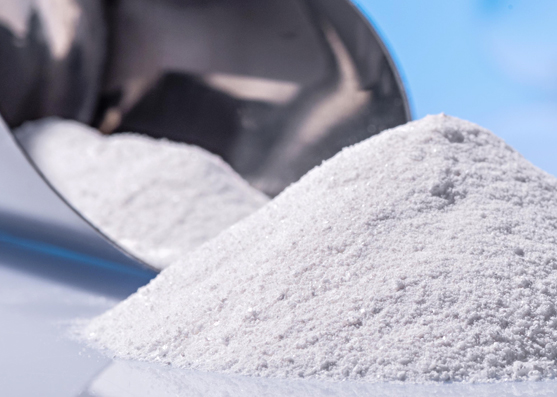Description
Alumina is as one of the most important ceramic oxides that has many applications in industry and engineering material. Alumina used in most cases due to high corrosion and oxidation properties at high temperature.
Impurities often reduce product life and corrosion resistance.
Key features of alumina which has caused it to be used in various applications are including: high compressive strength, high hardness, high wear resistance, high chemical resistance, high thermal conductivity, thermal shock resistance, high refractory, high dielectric strength and high electrical resistance even at high temperatures.
There are various grades of alumina. Every ceramics manufacturer, according to the needs of alumina, will use one or more grades of it. Metallurgical alumina is used in the production of aluminum metal.
If aluminum hydroxide is heated at temperature above 1100 °C, calcined alumina is produced. Calcined alumina used in a wide range of refractory applications and ceramic products. Sodium oxide is the main impurity in this type of alumina.
Reactive alumina is usually used about alumina with relatively high purity and fine crystal size. According to another definition, reactive alumina can form a body that gives high density after sintering at relatively low sintering temperature (about 1550-1650 °C). This type of alumina is obtained after crushing and grinding processes of calcined alumina. However, calcination of this type of alumina occurs at high temperatures. Percent of sodium oxide that presents in this type of alumina is carefully controlled to be as low as possible.
This type of alumina used in places that requires great strength, wear resistance, heat resistance and chemical stability. Actually this type of alumina used in produced body where the mechanical behavior at high temperature is important for us. This type of alumina is used in composites, refractories and etc.
Tabular alumina, is that sintered or recrystallization α–alumina. It is called tabular because its morphology includes large, flat and sheet form of corundum. This type of alumina is produced by precipitation, extrudes or presses of calcined alumina and then annealed at temperature below the melting point (1700-1850 °C), in rotary kiln. In some applications it can be used as catalyst bed, because these materials are sintered, resulting porosity is low. This type of alumina has good chemical stability and high refractories. Due to its characteristics is used in the production of various refractories. In fact, the most application of this alumina is production of castable and shaped refractory. This type of alumina helps to increase body strength. Another reason for using this type of alumina is different size of particles. In addition to the said applications tabular alumina is used to make carbon-alumina composites. These composites are used in the manufacture of tundish drain valve slide.
Fused alumina is produced in an electric arc furnace. Fused alumina has a high density, low porosity, low permeability and high refractories. Because of these properties, this type of alumina is used in manufacture of abrasive and refractory. Porous alumina has a high porosity. Type of porosity in this alumina is closed. This type of alumina has low density, light weight and insulating properties and is used for insulating body similar to insulating mass. This type of alumina is produced by blowing air into the electric arc furnace.
Alumina is calcined at low temperature called active alumina. Due to the low temperature calcination, percent of other phase than α-phase are much. Because high chemical activity of non α-phases, this type of alumina has a high chemical activity and hence it is used in the manufacture of catalysts and catalyst substrate.
APA Ceram
APA Ceram group is pioneer in importing and supplying alumina with grain size and purity that have been determined by industrial units, and likewise consultation on material selection and engineering services


